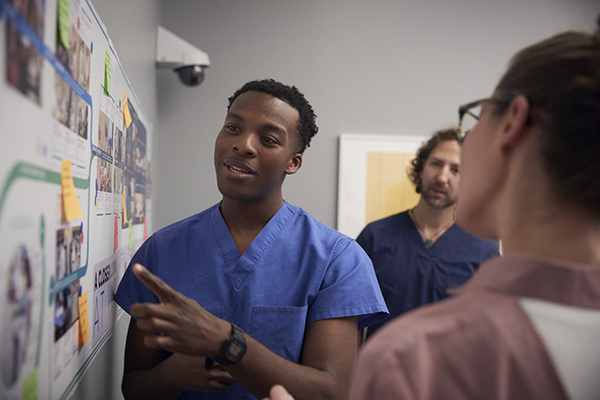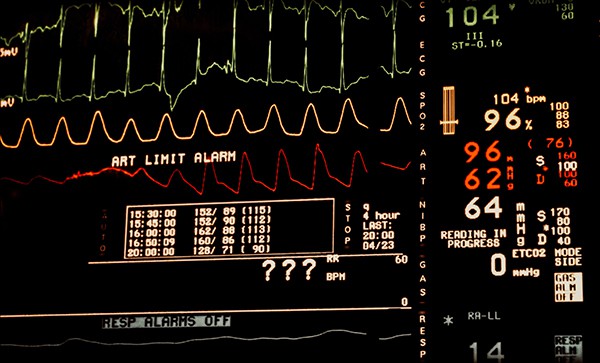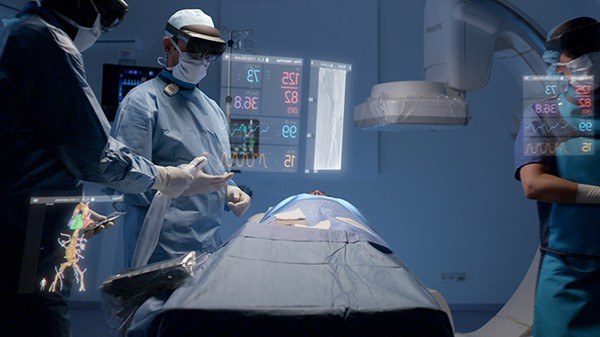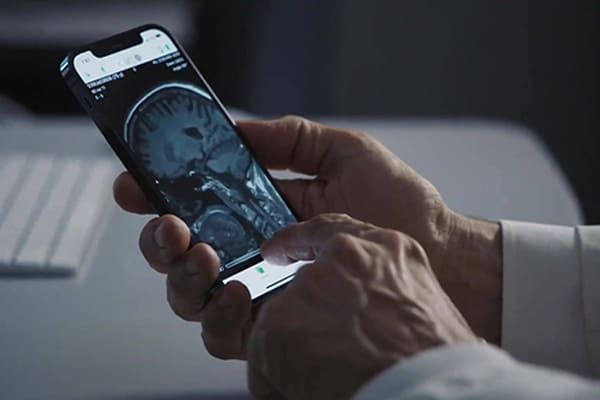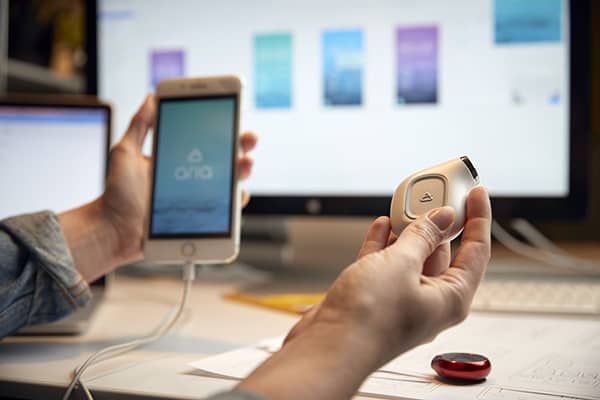EMERGING HEALTHCARE INDUSTRY TRENDS #9: Improving Contextual Design & Cognitive Empathy
As the amount of data inputs in healthcare grows, healthcare providers are increasingly overwhelmed by the increasing amounts of data and alarm fatigue. Interactive technologies that can address and alleviate this burden can significantly impact patient outcomes and decrease provider burnout by improving contextual design and practicing at a greater level cognitive empathy. Understand how a contextual design process can benefit your product design development with this engaging blog. Part nine in our series on emerging healthcare industry trends for 2021.
What is Contextual Design and Cognitive Empathy?
Contextual design is a user-centered design process that provides various key techniques for user-centered design to collect data about users through field research. The data is interpreted and consolidated in a structured way (typically through an affinity diagram) and used for ideation, prototyping product and service concepts and iteratively testing and refining them. Cognitive empathy is a methodology critical to the success of contextual design as it requires design teams to take another person’s perspective and imagine what it is like to walk in their shoes to understand their experience.
As the sheer amount of technology in every healthcare setting grows, providers are increasingly suffering from data and alarm fatigue from devices and healthcare information systems. To reduce burnout, design teams are using contextual inquiry to understand the impact that data and information can have on an a team members cognitive load. Developing interface designs that deliver just the right amount of information, at the right time, in the correct sequence to alleviate fatigue can vastly improve usability and the user experience.
The key drivers of this trend are:
– Growth of AI & machine learning: As AI becomes both more powerful and practically applicable, its utility will expand into more healthcare settings, interpreting user data that would have otherwise been churned out in unsorted bulk to caregivers is a groundbreaking software development.
– Alarm fatigue exacerbated by COVID-19 responsibilities: With many ICUs at max capacity over 2020 and into 2021, hospitals are increasingly aware of and invested in visioning solutions to the alarm fatigue that ICU patients cause.
– Mainstreaming of mixed reality: Devices and interfaces that use mixed reality are becoming commonplace in other industries, a tactic that works to normalize (and design) their applications in the slower-moving healthcare setting.
– FDA Digital Center of Excellence launch: This center, housed within the Center for Devices and Radiological Health (CDRH), will serve as the federal resource for digital health technologies, devices and new product concepts.
Why Contextual Design & Cognitive Empathy Matters
A single patient in the ICU generates an average of 350 alarms per day, with a reported 85% of them being false. These alerts rely on outdated technology and (given that statistic) are pretty unreliable in discerning which events are emergencies. This means there’s a massive contextual design opportunity for AI to filter information, make preliminary judgments, deliver the correct information at the right time, and take the decision-making off humans unless necessary. This reduction of cognitive load can decrease burnout, which has become especially important given the inherent stressors of the COVID-19 health crisis.
The Opportunity: Decreasing surgeon burnout by enhancing situational awareness
As digital tools in the OR have become increasingly fragmented, it has become difficult for surgeons to access the resources and information they need to make critical decisions timely. To address this issue, design teams are working to better leverage digital tools and AI to provide surgical staff with a snapshot of what’s happening inside and outside the OR.
Heads-up display technologies are becoming ubiquitous in the auto industry, delivering detailed data in a non-intrusive but sailable way. For example, the Jaguar Land Rover’s 3D heads-up display overlays critical information, like lane closures, at the point of decision to ensure that drivers don’t have to divert attention away from the road. These displays could similarly be applied to situations in the healthcare industry. Environmental awareness is a critical part of user environment design, delivering information that allows the user to make crucial decisions without forcing them to break their concentration and look away from the stimuli surrounding them.
Apps like Mobile MIM and OsiriX HD offer mobile imaging access, using already utilized hospital tablets and smartphones to allow surgeons access to patients’ surgical imaging in a more convenient and agile way. Providing surgeons with real-time clinical decision support can better understand what is happening during surgery. As AI continues to advance, other intra-operative decision supports will be available, too, like accelerating intraoperative pathology and recommendations for surgical steps.
The Opportunity: Increasing surgeon focus with responsive technologies
Walking the fine line of providing surgeons with the information they need and inundating them with field data they don’t is one of the design teams most significant challenges in developing the right information flow model for surgeons. By employing the right focused human-computer interactions based on an understanding of the users cognition, designers can make sure to provide relevant information at the right time.
Because they’re often subjected to high-stress situations, surgeons are especially prone to suffering from cognitive overload. Continuously captured patient data is an essential tool in the OR, but if left unfiltered, it can just serve to further burden surgeons as they sort through heaps of information to find what’s essential. Studies show that cognitive load on novice trainees during laparoscopic surgical training has physiological effects on both experience and performance. Basically, as cognitive load increases, physical performance suffers. Responsive technologies have a significant opportunity to help reduce these cognitive demands and deliver a user interface with targeted incontext information that reduces mental strain rather than increase it.
By analyzing blink rate, pupil dilation, and eye-tracking data, researchers are hoping to understand work models and cognitive load during surgery better. Tobii Pro Glasses are used at the German Heart Center Berlin to help gain insight into expert medical staff’s mental processes and subconscious behaviors. Through eye-tracking analysis, researchers examine the cognitive processes of perfusionists (physicians who operate heart-lung machines) to understand how they react to different stimuli and complications during procedures. Researchers are hoping to use this information to understand how surgeons focus their attention to improve training resources and understand the overlap between visual information collection, user data and the use of imaging technology.
Stay up to date on the Latest Health Tech News with Thrive
The healthcare industry is in a significant transition period driven by the emergence of new technologies, work practices, shifting consumer expectations, and the COVID-19 health crisis. Keep up with everything you need to know for this year and next as we continue this series on 2021’s emerging health tech trends. If you haven’t already, make sure to check out our previous articles in this series and keep coming back as we explore emerging trends in healthcare.
With years of experience as an expert healthcare technology consultant, THRIVE can help you protect your business now and into the future. Contact THRIVE today.
RELATED POSTS
If you missed any of the previous posts in this blog series on the future trajectory of healthcare, you can find them here:
Week 1: The Shifting Point of Care
Week 2: The Hyper Personalization of Care
Week 3: Expanding the Continuum of Care
Week 4: Patient Empowerment
Week 5: Physician Empowerment
Week 6: Orchestrating Operating Room Efficiency
Week 7: Human-centered Healthcare Design
Week 8: Improving Medical Device UX Design
Week 10: Enhanced Data Visualization Tools
Week 11: The Increasing Prevalence of Robot-Assisted Surgery
Week 12: Behavioral Design for Medical
Week 13: Humanized Patient-Provider Interactions

